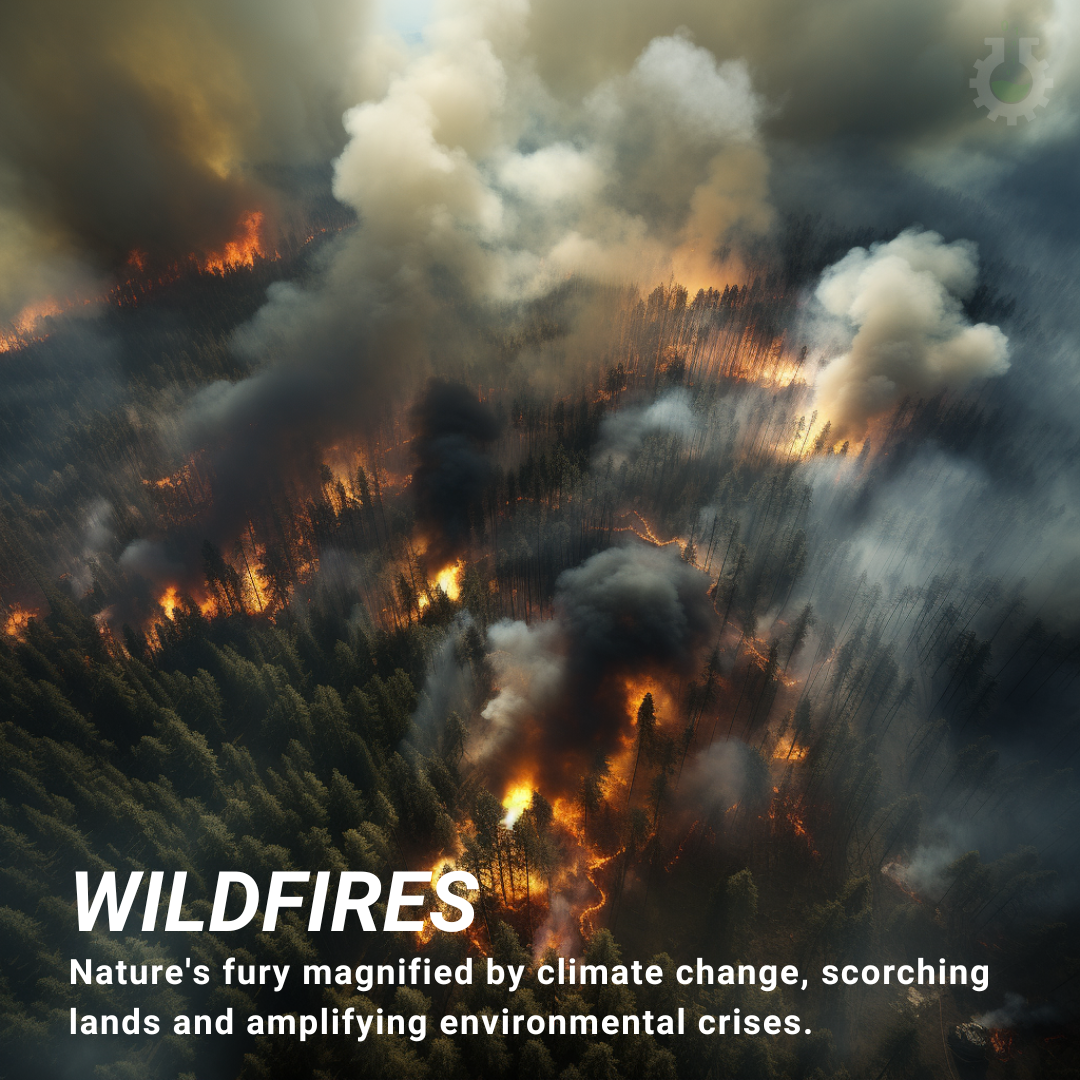August 7, 2023
Climate Change Poster Collection of the Day – Wildfires
Book a Demo
Today’s Climate Change Poster Collection features Wildfires, a natural phenomenon that can occur spontaneously and spread rapidly across vegetation and forest areas. These rampant fires are influenced by a variety of factors including weather conditions, wind, dry underbrush, and topography. The ignition of these fires can be due to human activities such as arson, discarded cigarette butts, sparks from equipment, and unattended campfires. Natural phenomena like volcanic eruptions and lightning strikes can also ignite wildfires.
Despite their destructive nature, wildfires play a dual role in ecosystems. On one hand, they can cause significant loss of life, property, and biodiversity, leading to catastrophic outcomes. On the other hand, they play a crucial role in shaping ecosystems by promoting plant diversity and renewing the soil. This dual impact of wildfires is what makes them both feared and revered in equal measure.
The process of predicting, controlling, and extinguishing wildfires is a complex one, involving the collaboration of firefighters and meteorologists. They use tactics such as creating firebreaks, instigating controlled burns, aerial firefighting, and applying water or fire retardants to manage and mitigate these fires.
The susceptibility of environments to wildfires is escalated by climate change, characterized by increased temperatures and prolonged droughts. This can potentially amplify both the frequency and intensity of wildfires. Additionally, wildfires contribute to climate change by emitting large amounts of carbon dioxide, further exacerbating the global warming situation.
The impacts of wildfires can be severe and far-reaching. Apart from the immediate loss of life and property, wildfires can also lead to soil erosion, which can disrupt the balance of the ecosystem and trigger other environmental issues.
Predicting the intensity and spread of wildfires is possible with the help of various models that take into account factors such as fuel type, weather conditions, and terrain. These models help in providing valuable insights that allow for better planning and response to wildfires, reducing their potential damage and aiding in faster recovery of affected areas.
While wildfires pose significant threats, understanding their causes, impacts, and the methods to control them can help in mitigating their effects and protecting our precious ecosystems.
Discover an inspiring collection of climate change posters.



